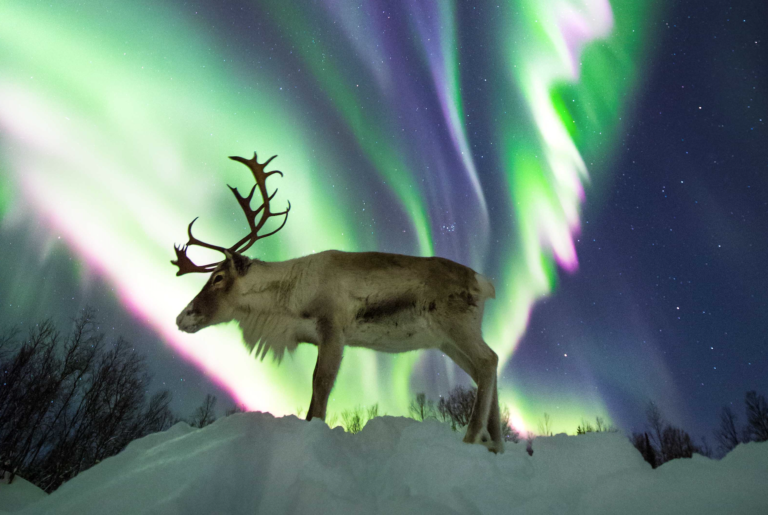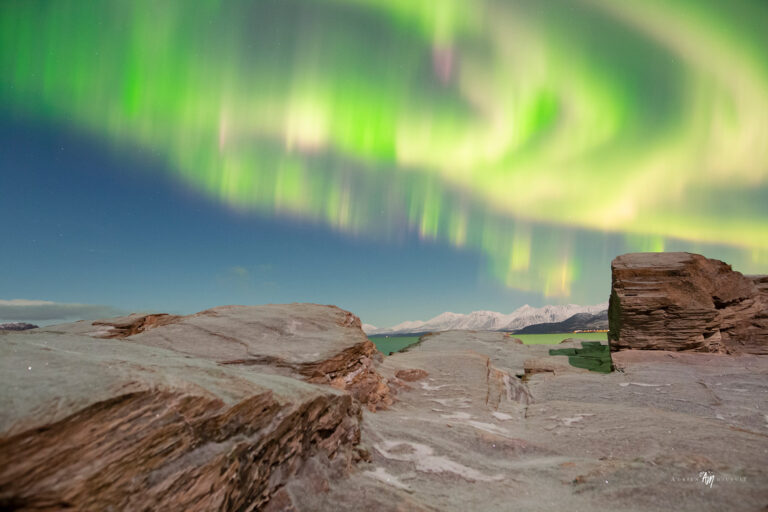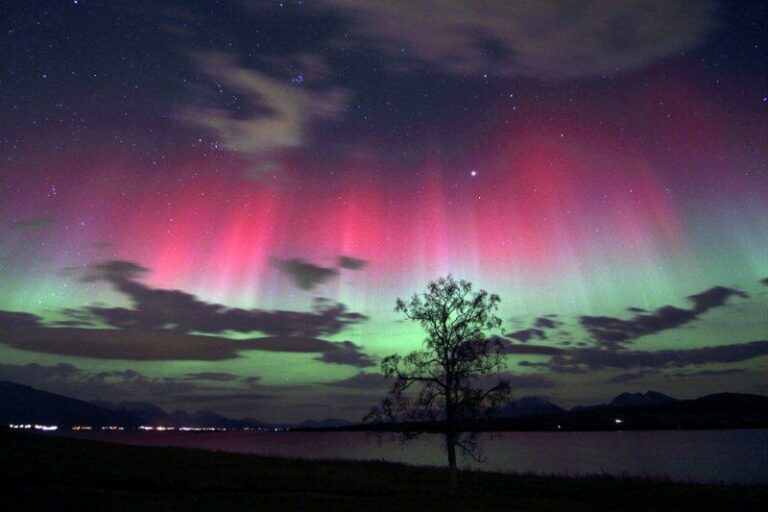Best aurora in 3 years over the high Arctic despite low geomagnetic activity!

- Credits: Adrien Mauduit
It doesn’t come as a surprise that the aurora should progressively start looking like they usually do during solar maximum, more vibrant that is, as we are drawing closer to it. The proof was what happened three nights ago over Troms, Norway. We experienced easily the most colorful aurora in 3 years of solar minimum. And believe it or not, it wasn’t even under geomagnetic conditions! Visit the Aurora Borealis observatory to take part in solar maximum upcoming action.
Solar minima or maxima not only dictate how active our star is, but they also somehow have an influence on how the aurora looks like. In normal times, I would have told you that the aurora randomly changes shapes and colors depending on the incident, ever-evolving solar wind. However, as this year has been the very first year out of solar minimum (defined by scientists as per December 2019), we have definitely seen a strange change in what the aurora looks like since the beginning of the season.

- Credits: Adrien Mauduit
This year, we have witnessed and reported multiple times how unsettled to active auroras appear more colorful, at least to the camera. Coincidentally (or not?), the particle density has rarely plummeted below 5 p/cm3 for months on end, explaining why we usually saw those slow-moving, north-directed arches and pillars with vibrant red canopies.
As a reminder, the red canopy of the aurora is given by the usually faint glow of extremely high-altitude monoatomic oxygen. The only way for this entity to release a photon of light in the wavelengths of the spectrum corresponding to blood red, is not to have its energy stolen by other atoms or other passing solar particles. Indeed, when hit by a solar electron, an atom of oxygen takes about 100 seconds to produce a red photon, which in the realm of quantic physics is unbelievably long.

- Credits: Adrien Mauduit
It means that, in the span of 100 seconds, if the atom bumps into another entity, whether it is another atom or a solar particle, the latter will steal its energy and the oxygen atom will not glow at all. As oxygen densities at such altitude are so low that atoms don’t even bump into each other anymore, the only way for oxygen not to glow is if a second solar particle bombards it. That usually happens when the speed of the solar wind is high, as solar particles with high speed will ricochet more often from their first bump and hit more oxygen atoms.
The perfect recipe for a more intense red glow is low solar speed and high particle density. And as it happens, we’ve had plenty of that since the start of this aurora season. Also, other auroral currents that are being solicited more often during the ascending phase of solar activity due to a certain interplanetary magnetic field (IMF) might also explain why we have been consistently seeing more colors in the sky.
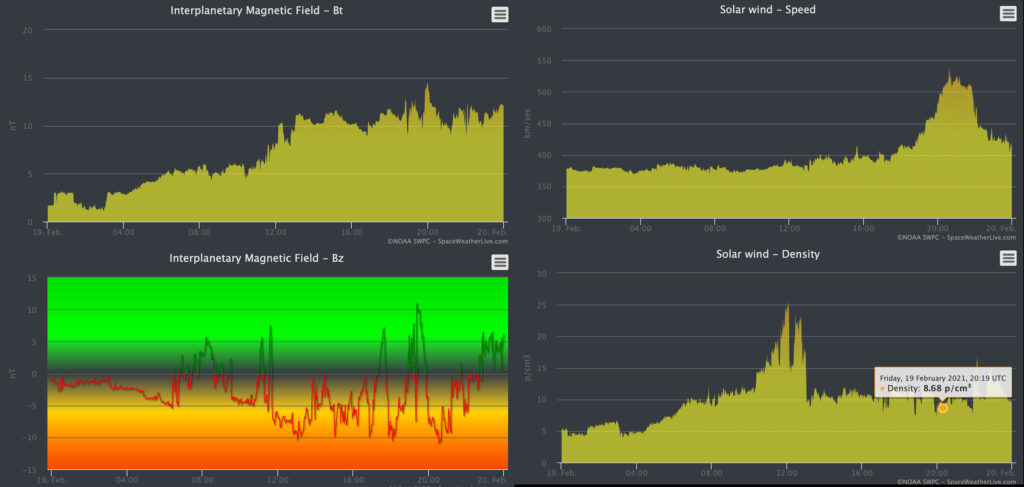
- NOAA- Spaceweatherlive.com
4bis. NOAA
But there was one type of aurora we hadn’t seen almost since the last real geomagnetic storm of the declining phase of solar cycle 24. This type of aurora can only happen when the IMF connects nicely and strongly with this of the Earth, as the Bz measured should dip below -10 nT and the Bt should be over +10 nT. Of course, figures are far from defining precisely which kind of aurora you get, but if they align in the right way, you are in for a show that you won’t soon forget.
On February 19th 2021, the geomagnetic activity was at very moderate levels, with only sustained active conditions (Kp4). It started as the oval was over Siberia around midday (Norway time), and prolonged periods of -10nT Bz and +10nT Bt allowed for the aurora to already be visible as soon as it was dark enough, namely around 5:30 PM here in Norway. As soon as I saw the faint bands already quite high in the sky, I jumped in my car with my gear and drove to the nearest nice location that has no light pollution and decent view 360: Snarby.
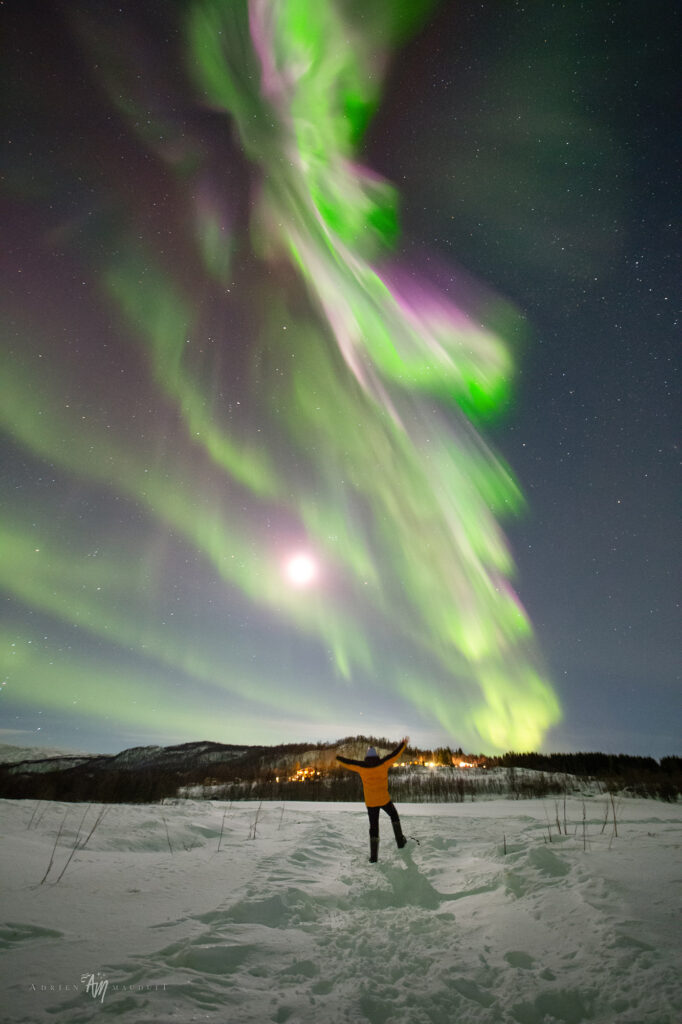
- Credits: Adrien Mauduit
I was going to drive a bit further down the road to Olderdalen, but 110km/h winds made me turn back quickly. I found a beach I never knew existed just before the entrance into Older Valley, which was much protected from the easterly winds. The gusts were still quite strong, however, so I had to be next to my cameras at all time to make sure they didn’t fall and break.
The aurora was constantly in the sky without giving out, and the canopy was catching the sunlight, so, the reds turned into a purple/blue. This was exactly how the aurora started back in mid-January (Jan 14th Angel aurora) very early in the evening, so I knew something big was happening. Although the display of January was very fleeting (1 hour) and never really did anything much afterwards except a single substorm development, this one just continued the whole night.

- Credits: Adrien Mauduit
The aurora never really exploded into the typical expansion phase giving very bright auroras, but instead, it kept producing very colorful, pillared bands and coronas. While the low speed never really allowed a strong substorm development, the well-aligned and strong field helped produced these absolutely breath-taking, long-awaited auroras over Troms. The red canopy was so visible that it made it through the 50% moon, which was still quite high in the sky!
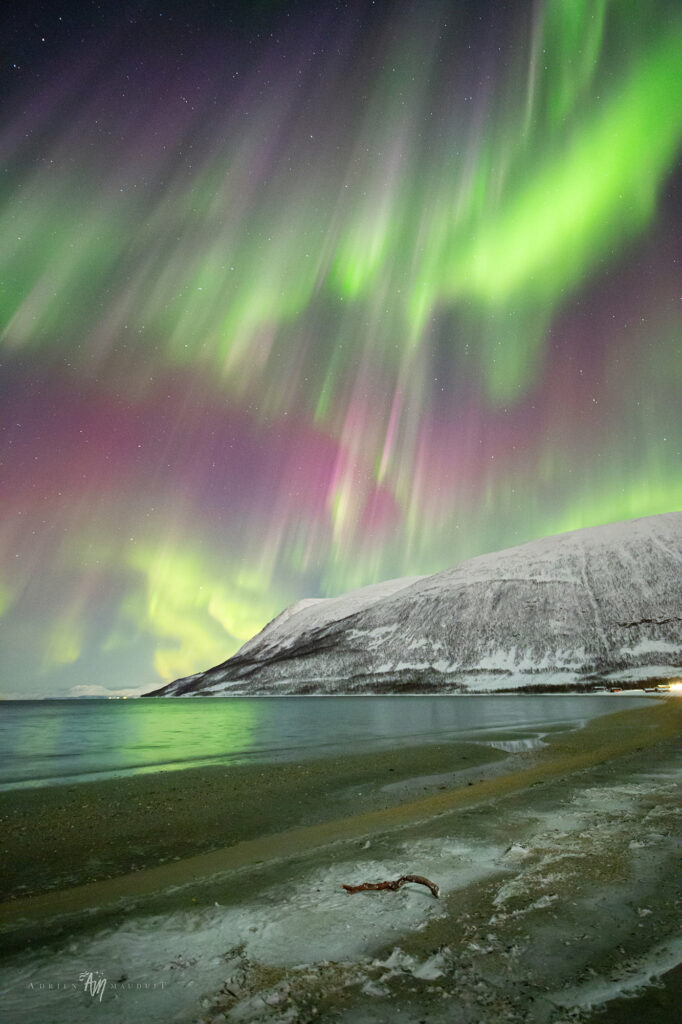
- Credits: Adrien Mauduit
When such aurora happens, you need to be in the field with your camera ready. Remember that in order to capture the whole scale of the show, you will prefer a portrait orientation, as well as a wide angle! As the aurora is not as bright as it would be if the substorm was strong, it will actually be easier to capture on camera. If you choose an aperture < f/2.8 and ISO around 3200, you can easily expose for 2-3 seconds to try and get the pillars sharp. Remember to give priority to short exposure times to avoid motion blur.
One thing is sure, I am far from forgetting this night. I filled up 5 SD cards of 128 Go with pictures and real-time movies. You can enjoy a few sequences here:
https://www.youtube.com/watch?v=aQOKjH65o5M
https://www.facebook.com/watch/?v=444379720245602


